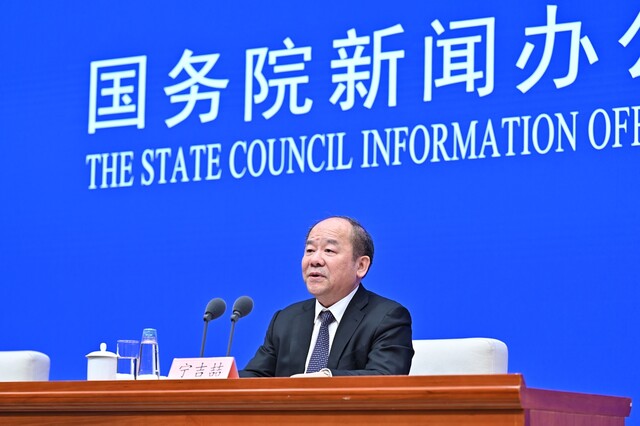1Q economic growth rate minus 6.8%
‘V’ rebound to 6.5% in the fourth quarter
National Statistics Bureau “GDP surpassed 100 trillion yuan for the first time”
Consumption contraction and income gap Still a problem

Ningji-zer, head of China’s National Statistics Bureau, held a press conference on the morning of the 18th to present the current state of China’s economy last year. Beijing/Xinhua Yonhap News
China’s economy, which rebounded from the Corona 19 shock, recorded a 2% growth rate last year. Among the major economies, it is evaluated as’plus growth’. China’s National Bureau of Statistics held a press conference on the morning of the 18th. It was tentatively calculated that the growth rate reached 2.3% compared to the previous year.” Earlier, on the 30th of last month, the National Bureau of Statistics announced that China’s GDP in 2019 was reduced by 1.2 trillion yuan to 98.65 trillion yuan from the previous year, and the growth rate was revised from 6.1% to 6.0%. China’s economy, which recorded negative growth of 6.8% from the previous year in the first quarter of last year amid the spread of Corona 19, rebounded and grew 3.2% in the second quarter as operations resumed with quarantine success. In the third quarter, it also grew 4.9% year-on-year, drawing a clear V-shaped curve. National Statistical Bureau Director Ningjizer emphasized, “It was the first in the world to control Corona 19 and resume operations, making it the only country in the world to achieve positive growth.” GDP of China, which entered the 10 trillion yuan in 2000, exceeded 50 trillion yuan in 2012, and entered the 100 trillion yuan in 2020. Compared to the year, the size of GDP has increased 40 times, and China’s share of the global economy has grown from just 1.7% to 17%.” Annual industrial production expanded 2.8% amid strong exports due to the’Corona 19 Special’. Last year, China’s exports increased by 4.0%, while imports decreased by 0.7%, and the trade balance recorded a surplus of 3.709.6 billion yuan. On the other hand, the contraction in consumption, with retail sales falling by 3.9%, remains in shape. The average consumption expenditure per capita also recorded 21,210 yuan, down 1.6% from the previous year. The income gap, which is considered an unstable factor in China’s economy, is also revealed. Last year, the average disposable income per Chinese person was 32,189 yuan (about 5.47 million won), a real increase of 1.2% from the previous year. However, the disposable income of residents of the city (43,834 yuan) was 2.56 times higher than that of the rural (11,131 yuan). Dividing the income segment into five quintiles, the disposable income of the top 20% (82,94 yuan) and the bottom 20% (7869 yuan) differed more than 10 times. Correspondent from Beijing/Inhwan Jung [email protected]
